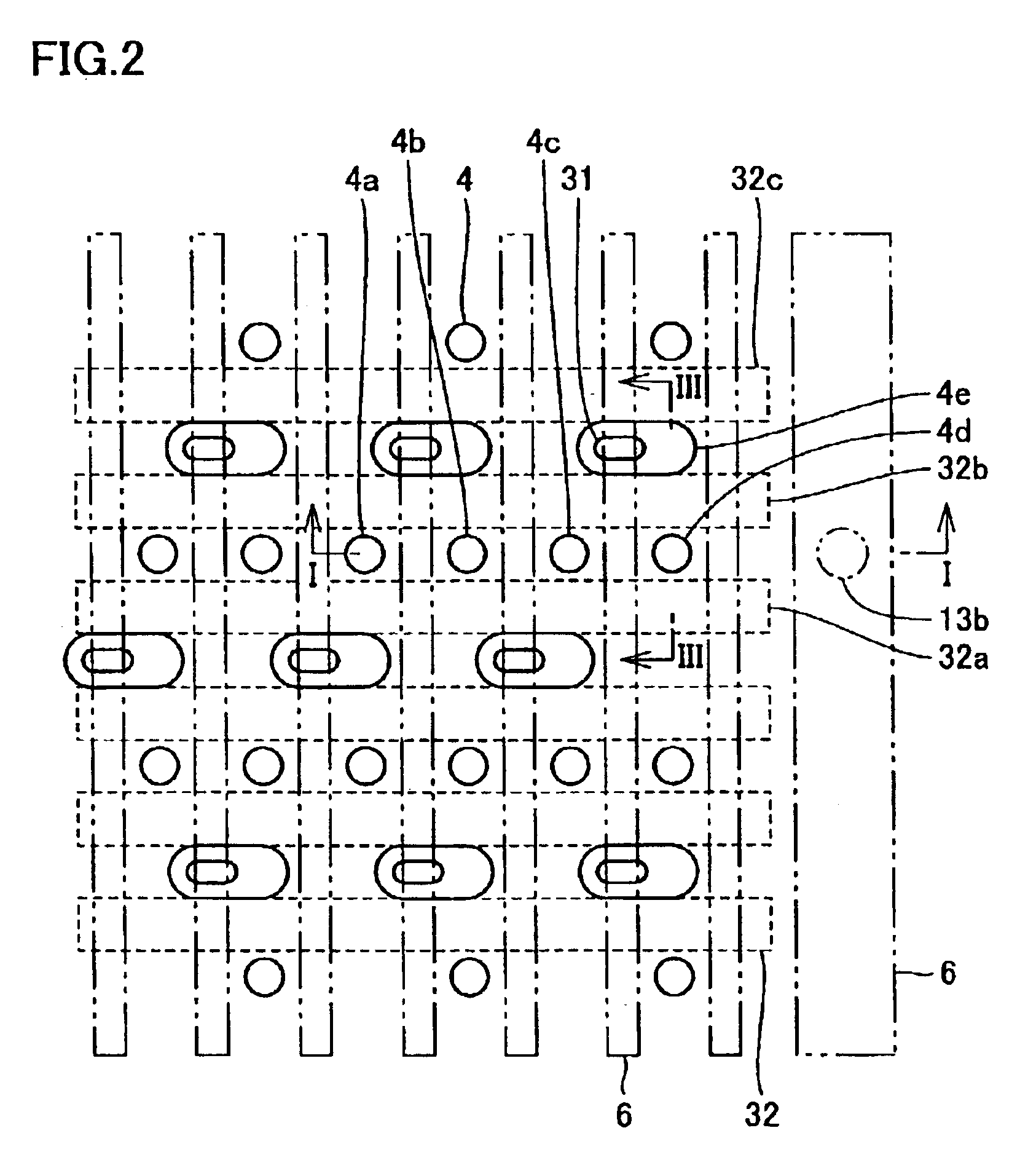Semiconductor device
a semiconductor device and semiconductor technology, applied in the field of semiconductor devices, can solve the problems of inability to implement miniaturization of semiconductor devices and penalty for area, and achieve the effect of preventing the generation of area penalties and contact defects
- Summary
- Abstract
- Description
- Claims
- Application Information
AI Technical Summary
Benefits of technology
Problems solved by technology
Method used
Image
Examples
tenth embodiment
The capacitor structure of the semiconductor device according to a tenth embodiment differs from that of the semiconductor device according to the first embodiment, and that is the only difference between the two. In the following, the same structures will not be described repeatedly.
With reference to FIG. 18 a semiconductor device has a concave MIM (metal-insulator-metal) capacitor. Holes 23a to 23d are formed in fourth interlayer insulating film 3d so as to reach the respective top faces of storage node contacts 8a to 8d. Lower storage node electrodes 10a to 10d made of ruthenium (Ru) are formed in holes 23a to 23d so as to cover the bottoms and the sidewalls of holes 23a to 23d. Furthermore, recesses are formed in lower storage node electrodes 10a to 10d, located in holes 23a to 23d, and the surfaces resulting from the formation of these recesses are flat.
A dielectric film 15 made of tantalum oxide (Ta.sub.2 O.sub.5) or barium strontium tantalum oxide (BST) is formed so as to cov...
eleventh embodiment
The capacitor structure of the semiconductor device according to an eleventh embodiment differs from that of the semiconductor device according to the second embodiment, and that is the only difference between the two. With reference to FIG. 19 the semiconductor device has a concave MIM (metal-insulator-metal) capacitor as described in the tenth embodiment.
According to the semiconductor device having such a configuration, the same effects as the effects according to the second embodiment can be obtained.
twelfth embodiment
The capacitor structure of the semiconductor device according to a twelfth embodiment differs from that of the semiconductor device according to the third embodiment, and that is the only difference between the two. With reference to FIG. 20 the semiconductor device has a concave MIM (metal-insulator-metal) capacitor as described in the tenth embodiment.
According to the semiconductor device having such a configuration, the same effects as the effects according to the third embodiment can be obtained.
PUM
 Login to View More
Login to View More Abstract
Description
Claims
Application Information
 Login to View More
Login to View More - R&D
- Intellectual Property
- Life Sciences
- Materials
- Tech Scout
- Unparalleled Data Quality
- Higher Quality Content
- 60% Fewer Hallucinations
Browse by: Latest US Patents, China's latest patents, Technical Efficacy Thesaurus, Application Domain, Technology Topic, Popular Technical Reports.
© 2025 PatSnap. All rights reserved.Legal|Privacy policy|Modern Slavery Act Transparency Statement|Sitemap|About US| Contact US: help@patsnap.com



